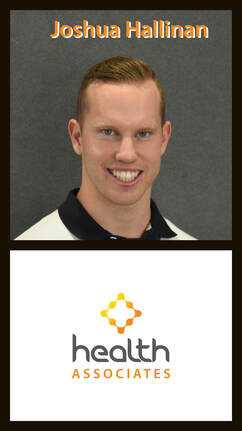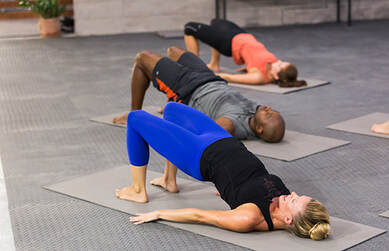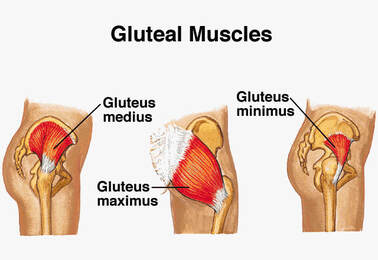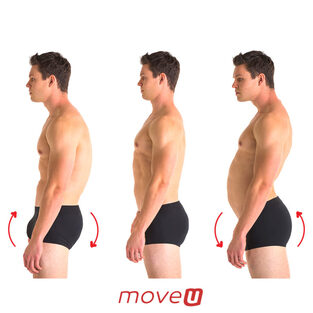|
Before performing any movement whether that would be a golf swing, throwing a punch in boxing, a 150kg back squat or even something as simple as going for a run/walk, we must make sure you know how align yourself in the best way possible to be able to get the most out of the movement, starting with the pelvis and importance of glute activation. When the pelvis is in neutral for you, you are able to properly activate the glutes. UNDERSTANDING THE PELVIS:
HOW TO FIND YOUR PELVIC NEUTRAL POSITION FOR MAXIMUM GLUTE ACTIVATION:
WHAT ARE THE ‘GLUTES’?
CAUSES OF WEAK GLUTES?
WHY IS GLUTE ACTIVATION AND STRENGTH SO IMPORTANT?
GLUTE ACTIVATION EXERCISES:
GLUTE STRENGTH EXERCISES:
There is not one exercise that will build your glutes. You will need to perform a variety of glute exercises that target different parts of the glutes. You must include this new awareness of glute activation and pelvic position. Activation of glutes and core will ensure an increase in strength and decrease risk of injury when performing strengthening exercises. Written by Joshua Hallinan, Chiropractor Health Associates Working Tuesday and Thursday References Mitchell B, Colson E, Chandramohan T Lumbopelvic mechanics British Journal of Sports Medicine 2003;37:279-280. Which Exercises Target the Gluteal Muscles While Minimizing Activation of the Tensor Fascia Lata? Electromyographic Assessment Using Fine-Wire Electrodes David M. Selkowitz, George J. Beneck, and Christopher M. Powers Journal of Orthopaedic & Sports Physical Therapy 2013 43:2, 54-64 Reiman, Michael P., Lori A. Bolgla, and Janice K. Loudon. "A literature review of studies evaluating gluteus maximus and gluteus medius activation during rehabilitation exercises." Physiotherapy theory and practice 28.4 (2012): 257-268. Cambridge, Edward DJ, et al. "Progressive hip rehabilitation: the effects of resistance band placement on gluteal activation during two common exercises." Clinical Biomechanics 27.7 (2012): 719-724. Boren, Kristen, et al. "Electromyographic analysis of gluteus medius and gluteus maximus during rehabilitation exercises." International journal of sports physical therapy 6.3 (2011): 206. Herrington, Lee. "Assessment of the degree of pelvic tilt within a normal asymptomatic population." Manual therapy 16.6 (2011): 646-648. Image 2 - http://www.ultimaterob.com/2013/05/30/glute-strength-and-activation/ Image 3 - https://moveu.com/blog/build-glute-strength/  Chiropractor Bachelor of Chiropractic Science Masters in Chiropractic Joshua is a very focused, dedicated and committed practitioner. Joshua is committed to health and has achieved significant personal success in sport and through adopting a healthy lifestyle. Joshua is very ambitious and he is always setting himself personal targets to improve and be the best practitioner he can be. You know when you see Joshua that you are in the hands of someone who continually strives to be ahead in his profession and will bring that knowledge and skill to all of his patients. Joshua has a special interest in sports injuries, musculoskeletal complaints and headaches. He enjoys helping relieve pain and alignments and supporting his patients to live optimally. Josh has a great friendly and enthusiastic personality. His relaxing and down to earth approach leaves you feeling comfortable and confident in his treatment and recommendations.
0 Comments
Leave a Reply. |
Archives
June 2021
|
|
Contact Details
Call 9542 3330
99A Loftus Ave, Loftus NSW 2232 Hours Monday & Wednesday 8am - 6pm Saturday: 8am - 12pm Early morning or later evening available by appointment Our reception is available for walk-ins on Monday, Wednesday & Saturday. Or by telephone 7 days. |




 RSS Feed
RSS Feed